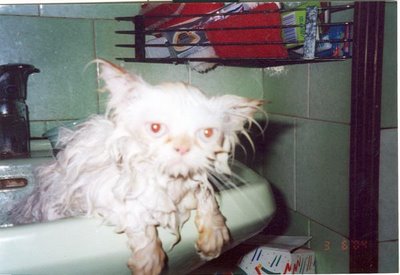Some people don’t want cats in their yard, so they rent cat traps or may try other less humane methods.
Cat Owners
Learn About Adding A Second Cat To The Mix
Not all cats respond to change great at first. Some will adapt right away whereas others require a little bit of time in order to make the change. Adding a new cat to the mix can be a stressful situation for any of your existing cats. You need to realize this in advance and do what you can to make the transition a little easier. Many cat owners find that the easiest way to accomplish this is to put the new cat into their own area for a few days so it can become used to its surrounding without being bombarded by other cats that have sonority in the home.
Make sure you are spending time with both the new cat and your other cats. Make sure that your new cat has access to food, water, and a litter box in the room they are in. After a bit, begin to leave the door open to the room that the new cat is in. Eventually your existing cats are going to become curious and check out the new cat. When this happens make sure that you go in as well to make sure nothing bad happens.
Pay attention to each cat and give them equal amounts of attention, this way neither cat will feel like you are fonder of one over the other which is extremely important. After a while the cats will work out the dynamics of their relationship, just make sure to continue showing an equal amount of affection for each cat.
Scratching up the Furniture!
Anytime that you decide to take a pet into your home you are taking the chance of having them destroy a lot of your belongings, including your furniture. What you need to remember, no matter how hard it might be at the moment, is that cat’s do have a reason for what they do. For many, their cats have a problem with clawing up the furniture and for this reason they have their cat declawed.
This is an option, but might not always be the best one for your cat or for your reasons. You really need to think it through before you have your cat declawed. It is possible to help your cat transfer their urge to claw your furniture into clawing something else such as a scratching post.
It is possible to train your cat to you a scratching post for their stretching and scratching needs. This can be done quite easily by making the scratching post seem enticing. Some people choose to rub scents such as catnip or dressing it up with a toy or two to make it more appealing. You also need to keep in mind that you need to strategically place your cat’s scratching post in an area where they can use it whenever they want to.
One of the keys to getting a scratching post that your cat will like is to make sure it is tall enough and sturdy enough. The great thing is that there are a variety of scratching posts available to fit every cat’s preferences. Also make sure that you discipline your cat whenever you catch them scratching your furniture and praise them when they are using the scratching post, you cat will soon catch on that they will be petted and praised when doing what they are supposed to be doing.
Choosing Cat Toys For Your Cat
In the next few paragraphs, we will explore new ideas and thoughts that may help you achieve your goal and decide what is best for you when choosing toys for your cats.
Toys for girl cats and boys:
When the mouse is away, cats play. And cats have the tendency to both play hard and play soft. Toys are to cats the same as toys are to dogs. It helps fight the boredom experienced by these pets as well as gives our feline friends the opportunity to practice and use their natural inclination to chase and hunt for prey. It also gives the cat owner that great chance to play with their pets, an experience that will aid in bonding their relationship.
But what toys are best for cats? The following are tips and helpful advice to get that perfect toy for the cat owners perfect pets.
Play safe:
The good thing about cats is that they can play ball inside the house and the owners will never know it. Still, there may be things inside the house that cats could find attractive yet might actually endanger their health and safety. Houses must be cat-friendly. As much as possible, take away any string, yarn, needles, rubber bands or other objects that could easily be swallowed by cats. These things could be lethal to cats. Do not let them play with these articles no matter how cute they may appear to be.
Play soft:
Choose soft toys that can easily be machine-washed. It is best that the toys chosen to be played with by cats are also the toys marked as safe to be played with by children below three years old. Toys such as these usually contain fillings that are not hazardous. Also, avoid giving cats toys that are hard and rigid, these types do not appeal to them that much.
Know your cat, know their toy:
It is best that one also familiarize themselves with your cat. Doing so helps in ones selection of the kind of plaything that best serves the size of ones cat – the kind of activity the cat likes and its unique preferences. Know the environment in which the cat likes to spend its time the most.
Choose active toys:
Toys that are great to play with for cats are usually the round plastic ones (such as rings from shower curtains, plastic balls, golf balls, balls used in ping-pong) as these give cats the opportunity to chase and paw around. They could also carry these in their mouths, make sure though that these are big enough they cannot be swallowed but not so large that they cannot carry them in their mouths.
Choose active play:
Balls can be placed inside bath tubs filled with water. Watch as cats frolic and play on and around the toy. It is just as enjoyable to the cat as it is fun for the cat owner. Another added feature that could be placed on balls are bells. One not only sees how cats play, one could also listen and take pleasure in the playful sound . Another simple yet effective plaything for cats is a paper bag. Use paper bags that do not have handles. These bags are good for pouncing around. Cats hide in them too. As much as possible, avoid the plastic ones as cats have the tendency to chew these and they may eat the plastic. This is not good.
Toys with tails:
Cats like playing with soft toy animals – specially the ones that have tails. They either bite them, paw them or chase these little stuffed toys around. It is best if these toys are as big or as small as the cats playing them.
Toys with catnip:
Catnip is sometimes used as stuffing for toys that are soft. Putting catnip in such playthings make the toys more enjoyable to carry, kick and throw around. More importantly, it is safe for cats to chew on, roll around in, or eat.
It is okay for owners to place catnip on carpeted floors, or (to make clean-up easy) on towels. There are now catnip oils that can be placed on carpets, and they usually stay there. Cats detect these too. Although small cats, specifically kittens who are younger than six months have shown a certain kind of immunity to catnip.
All in all, it is best that cat owners define what kind of toy should be played by their cats. It is advisable that different kinds of toys be given on certain days, and that displaying all toys simultaneously may not be a good idea. Cats can easily tire of seeing the same fluffy toy animal again and again. Variety always works best.
However if cats show a certain liking to a specific toy, let them play with it, or sleep with it – whichever they like. In closing, it will benefit you to seek out other resources on this topic if you feel that you don’t yet have a firm understanding of the subject matter.
Aussiecats takes on the new local cat laws in Western Australia
In WA local laws are being introduced in several shires in relation to the keeping of cats. The City of Joondalup have formalised laws which will come into effect in October 2009. Other shires are testing these new laws over the next 12 months before compulsory registration of cats is enforced and the application of fines.
These laws aim to promote responsible cat ownership, welfare and safety of domestic cats and to assist in the prevention of nuisances to the community caused by cats.
Unfortunately for cat owners there is presently no avenue of disputing these laws with the individual shires nor dispute the decisions made under them. These laws have the potential to disrupt and damage relations between neighbours and encourage vigilantes to target several cats in one street just because they don’t like cats.
There are some variations in these local laws depending on which shire your suburb falls in, the main requirements are:-
1. The registration of cats may be compulsory for each cat you own or only for 3 – 6 cats.
2. All registered cats within the Shire shall be sterilized.
3. Cat owners shall ensure their cats are identified by a collar and tag with their identification details including address and telephone number of the owner or be micro-chipped with the contact information of the owner.
4. A cat shall not be in a public place unless it is under effective control; a cat shall not be in designated place specified in a schedule under the local law in particular protected flora & fauna areas. A cat shall not be on private premises where a complaint by the owner or occupier of the premises has been made to the City in relation to the cat’s unwanted presence on the property.
Penalties
Contraventions to these local laws may incur a fine as nominated by your Shire or the impoundment of your cat by an authorised person which includes a Shire Officer or the occupant/owner of a private residence. If a complaint is made by a neighbour to the Shire about your cat, the Shire Advocate or a Shire Ranger will contact you directly as to the nature of the complaint and remedies expected.
Note: you cannot be forced to fully enclose your cat currently under these local laws, only to keep your cat inside during the hours of 9pm to 6am each day.
Where an unidentified cat is impounded and not collected within 7 days of its impoundment the Shire can offer the cat for sale, cause the cat to be destroyed or cause the cat to be rehoused.
How these Local Cat Laws affect Real People…
Trapping cats and removing them from their own street and neighborhood under these new local laws is an emotional issue for the cat owner, their immediate family and for other pets in the household. Children are particularly affected when a beloved pet goes missing as are the elderly and those pet owners who have had their cats for a many years.
With the urban sprawl in Australia the advent of much smaller block sizes for home owners means we are nearer to our neighbours than ever before. Surely there has to be some realism to these new cat laws and equality & fairness for cat owners to also protect their cats and have the due process to dispute complaints.
Aussiecats.com is a new website set up for cat owners in Australia to publicly protest against these new cat laws. Presently cat owners have no rights to dispute complaints made against their cats under these new laws nor are there any legal avenues to protect your cat being trapped by a neighbour. Game on…
How to Deal With the Behavior Problems of Cats
Cats are simply adorable. They are cuddly and cute, and yes, they enjoy receiving so much attention. That is why sometimes, cats develop several annoying and destructive behavior and you should know how to deal with behavior problems of cats.
Cats are animals, and as such do not have enough reasoning to tell and distinguish right from wrong. But you, the cat owner, knows what is good and bad, and so it is your responsibility to help your cat act accordingly. You need to deal with the behavior problems of cats.
Behavior problems of cats are the usual problems cat owners encounter from their cats. Some owners really feel very annoyed by several of their cat’s behavioral problems, so they just hire cat trainers for long-term solutions. Attitude problems are very common in cats.
If you have a cat, it is not enough that you shower your pet with utmost attention and care. It is your responsibility to instill in the cat righteous attitudes especially when there are other people living in your house. Being adorable and cute are not enough for the cat to get away from every offense it makes.
Tips for dealing with behavior problems of cats
Here are some practical tips that would help you control the unwanted behavior problems of cats. Take note that cats also need to act nicely especially when there are other people in the house or if there are guests:
Discipline your cat. This is one way to deal with the behavior problems of cats. You could teach the animal about right and wrong behavior. For example, if you see your cat do a nice thing, pat it gently on the head. Otherwise, push your palm on the cat’s face. This would give it the signal that what it just did is not acceptable.
Do not surprise your cat. Cats hate surprises so to avoid behavior problems of cats avoid surprises. Do not disturb a sleeping cat or suddenly take away food from an eating cat. Doing so would provoke the cat and make it really angry to attack you or anyone.
Do not ever hit a cat whenever it does nasty things. This is not a good way to deal with behavior problems of cats. Hitting, just like in kids, is not very effective in making cats realize what deed is wrong. Do not ever teach your cat to develop fear of you.
Make specific cat misbehavior impossible to be accomplished. This is another good way to deal with behavior problems of cats. For example, if the cat wants to steel food from containers, keep the containers tightly closed and sealed. Also make light objects and figurines in the house out of reach of cats, or place them in a glass cabinet.
For littering and waste elimination behavior problems of cats, you could invest in cat litter boxes. Cat litter boxes are very ideal in training the cat to urinate or eliminate feces responsibly.
Take your cat to the vet regularly. That way, you could immediately tell if there is a physiological problem in the cat. Behavior problems of cats may also due to pains. Usually, when cats fall ill, they also tend to misbehave.
Cats are possessive. They want your sole attention. If there are other pets in the house, your cat might sense that you are not faithful. To remedy this situation, do not let the cat see you care for and nurture other pets.
Use reward and punishment to deal with behavior problems of cats. To make the cat also behave properly, you could also make use of the reward system. For every good deed you see in the cat, reward it by giving its special cat snack. Whenever the cat does bad acts, punish it by not giving it any cat snack, though you must show the cat that there is cat snack that is supposed to be given to it.
If you have tried the above mentioned tips and found no success do not lose hope, you can still tame your cat and you can have a much more rewarding life with your cat if you only learn a few secrets on cat behavior.
Did you know that you can transform your cat’s behavior with proven techniques that will give you immediate results? Discover how to end the behavior problems of cats visit All About Pets
To Wash A Cat In The Toilet Is SICK!
Why Is Washing Your Cat in Toilet a Crazy Thing to Do?
If you wash your cat in the toilet you might kill your cat
Some irresponsible cat owners think that washing a cat in the toilet is a “smart” way of washing the cat. CatCamille is against that way of washing your cat. Find out why….

First, I’d like to show you some advice I found at GeoCities.com on how to wash your cat in a toilet.
Reading this I almost peed myself laughing! I found it soooo hilarious that some people would actually be so stupid as to really believe that they should wash a cat in the toilet…. The dirtiest place in the house, yuck! Man, what’s wrong with a tub or in a clean sink?
In my opinion, if any poor dumb soul does wash their cats in the toilet, it’s an incredibly MEAN thing to do!
Look at the poor cat to the left, looks like it needs a shrink. Or it’s turning into a dog. If you wash your cat in the toilet, make sure to get a cat health insurance for you and your cat.
So here is the extract of “How to wash your cat in the toilet”:





